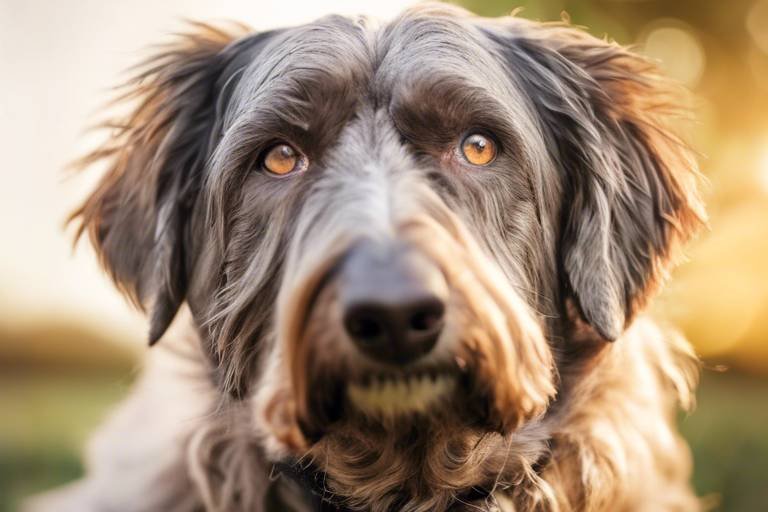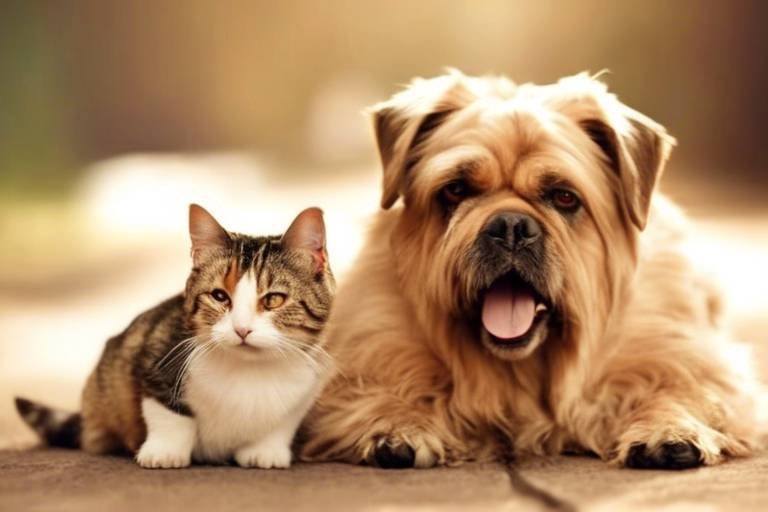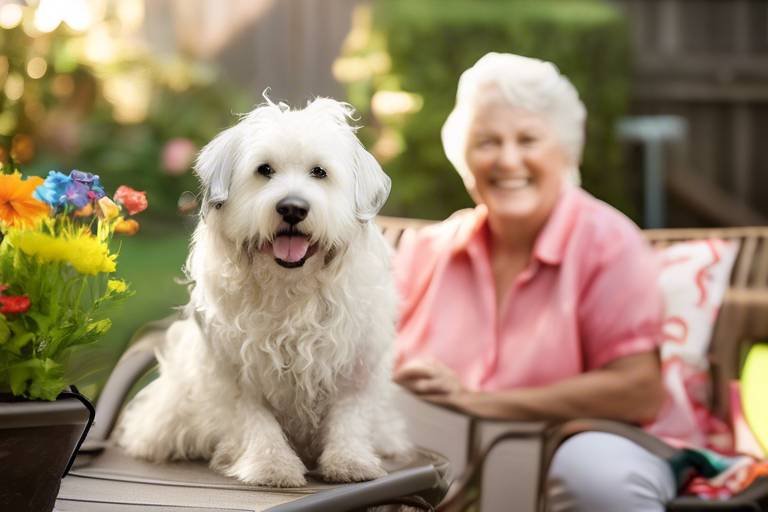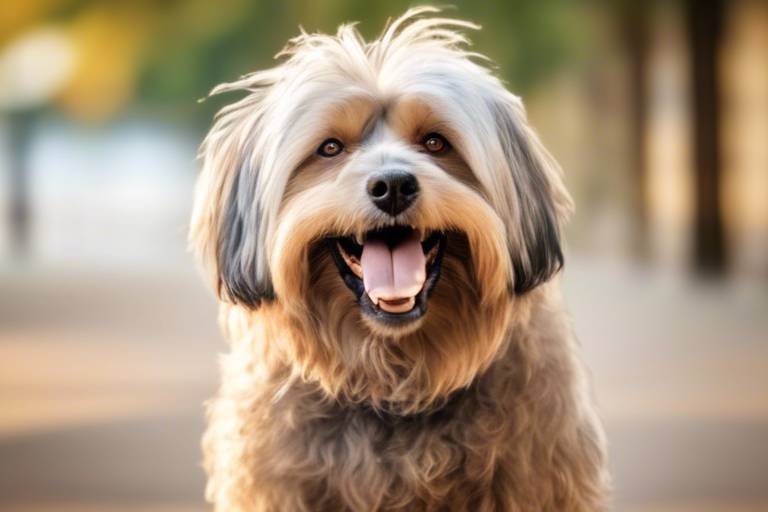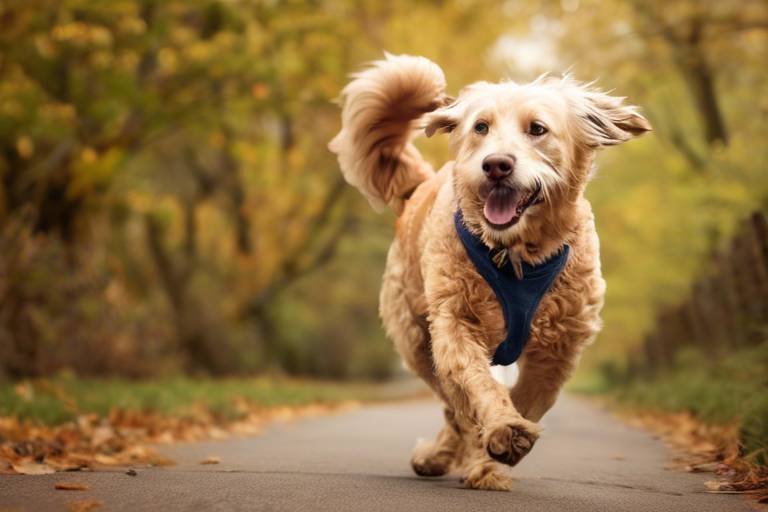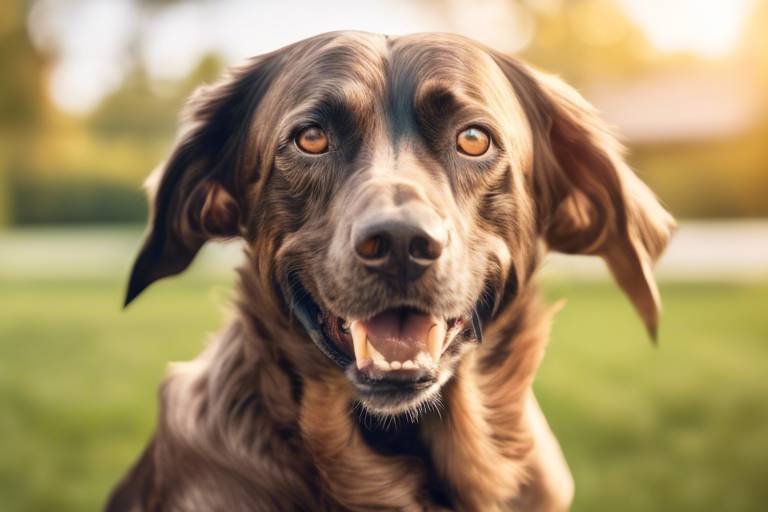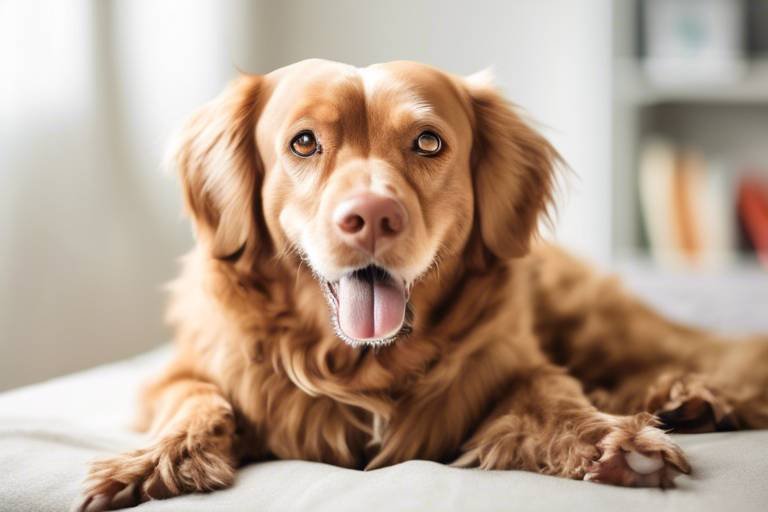Creating a Senior Pet Care Routine
As our beloved pets age, they become more than just furry companions; they become cherished family members who require a little extra love and attention. is essential for ensuring that your aging pet enjoys a happy, healthy life. Just like humans, pets experience changes as they grow older, and understanding these changes can help you provide the best care possible. So, how do you go about establishing a routine that caters to their unique needs? Let's dive into the important aspects of senior pet care that will keep your furry friend feeling their best!
As pets age, their physical and emotional needs change significantly. Just think about it: a young puppy is full of energy, bounding around the house, while a senior pet may prefer a cozy spot by the window. It's crucial to recognize these shifts to ensure your pet's comfort and happiness. Older pets may face challenges like arthritis, dental issues, or even cognitive decline, which can affect their behavior and overall quality of life. By being aware of these changes, you can tailor your care routine to meet their evolving needs.
When it comes to senior pets, proper nutrition is vital. As they age, their dietary requirements shift, and they may need fewer calories but more nutrients. It's essential to choose foods that are specifically formulated for senior pets, as these often contain the right balance of proteins, vitamins, and minerals. Additionally, consider incorporating supplements that can support their joint health or cognitive function. Remember, a well-nourished pet is a happy pet!
Selecting age-appropriate food can significantly impact your senior pet's health. With so many options available, it can be overwhelming to determine what’s best. Look for foods that are high in protein and low in fillers. Here’s a quick guide to help you navigate your choices:
| Type of Food | Benefits |
|---|---|
| Dry Kibble | Helps with dental health and is convenient to store. |
| Canned Food | Higher moisture content, which is great for hydration. |
| Raw Diet | Can be beneficial for some pets, but requires careful handling. |
Senior pets may have specific health issues that require special dietary considerations. For example, if your pet has kidney disease, you may need to find food that is lower in protein. On the other hand, pets with arthritis might benefit from diets enriched with omega-3 fatty acids to help reduce inflammation. Always consult your veterinarian to create a tailored diet plan that addresses your pet's individual health needs.
Hydration is crucial for senior pets. As they age, some pets may not drink as much water as they should, leading to dehydration. To encourage your pet to drink more, consider the following tips:
- Provide fresh water daily and change it frequently.
- Use a pet water fountain, as many pets prefer running water.
- Incorporate wet food into their diet for added moisture.
Regular veterinary visits are essential for monitoring the health of senior pets. As they age, their bodies undergo changes that can lead to various health issues. Routine check-ups allow your vet to catch potential problems early on, ensuring your pet receives the necessary care. During these visits, you can expect a thorough examination, vaccinations, and discussions about any changes in behavior or health. Don't hesitate to ask your vet any questions; they’re there to help you and your furry friend!
Maintaining mobility and exercise is important for senior pets. While they may not be as sprightly as they once were, keeping them active is crucial for their physical and mental health. Engaging in regular, low-impact activities can help maintain their muscle tone and joint flexibility, contributing to a better quality of life.
Low-impact activities can be beneficial for senior pets. Think of gentle walks, swimming, or even interactive play sessions with soft toys. These activities promote physical health without putting too much strain on their joints. Remember, every pet is unique, so it's essential to tailor the exercise routine to your pet's specific abilities and preferences.
Creating a safe and comfortable home environment is crucial for senior pets. Consider making changes such as:
- Providing soft bedding in a quiet area.
- Using ramps or steps to help them access their favorite spots.
- Removing obstacles that could lead to slips or falls.
By adapting your living space, you can ensure your senior pet feels secure and comfortable in their surroundings.
Q: How often should I take my senior pet to the vet?
A: It's generally recommended to take senior pets for check-ups at least twice a year, but your vet may suggest more frequent visits based on your pet's health.
Q: What are some signs that my senior pet may need a dietary change?
A: Look for changes in weight, energy levels, or digestive issues. If you notice any of these signs, consult your veterinarian for advice.
Q: Can I still train my senior pet?
A: Absolutely! Senior pets can learn new tricks and commands, just be sure to keep training sessions short and positive.
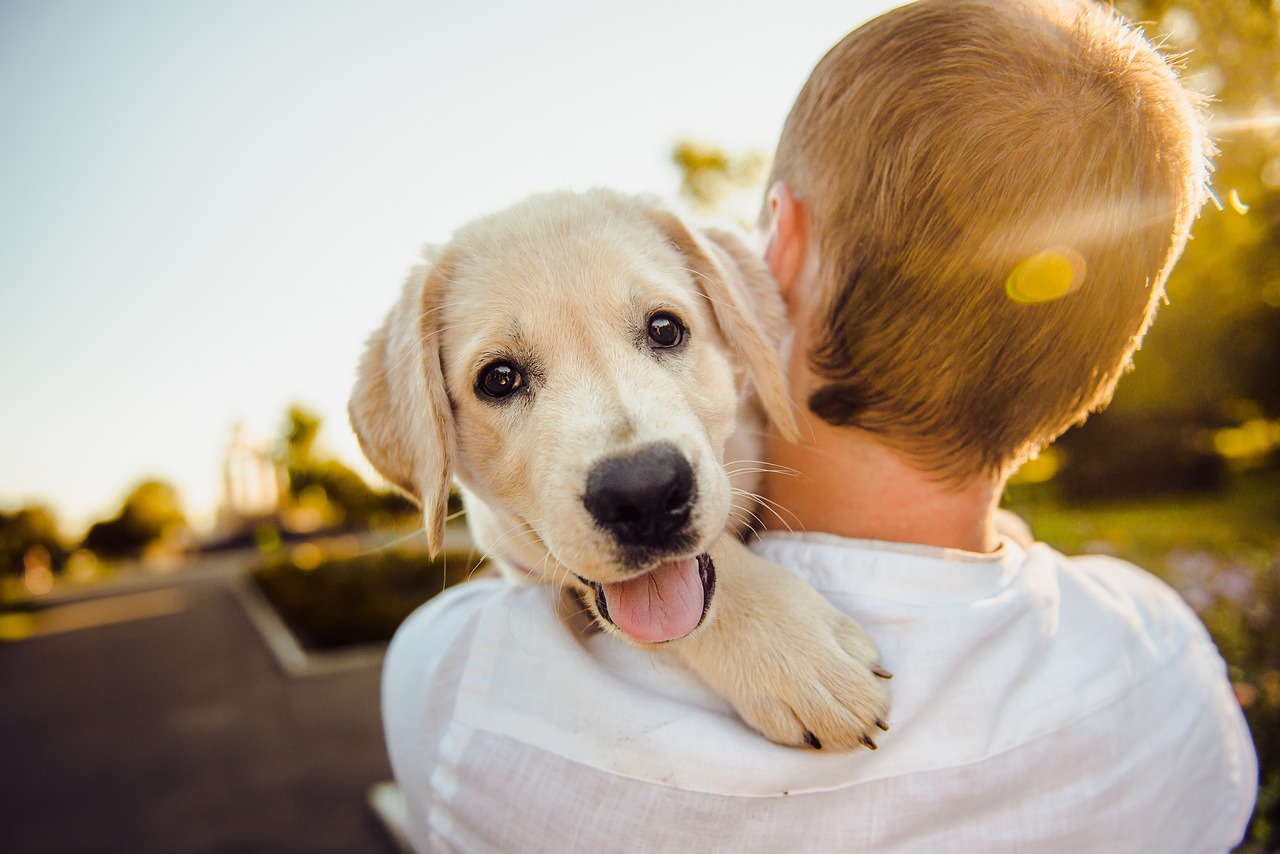
Understanding Senior Pet Needs
As our furry friends age, they undergo a myriad of changes that can affect their overall well-being. Just like humans, senior pets experience shifts in their physical capabilities, emotional health, and even social interactions. Recognizing these changes is crucial for ensuring that your beloved companion enjoys a happy and fulfilling life. Have you ever noticed how your pet's energy levels drop or how they might be less enthusiastic about their favorite activities? These are signs that their needs are evolving, and it's our responsibility as pet owners to adapt to these changes.
One of the most significant aspects of understanding senior pet needs is acknowledging that their physical health can decline with age. This decline can manifest in various ways, such as joint stiffness, decreased mobility, and changes in vision or hearing. For instance, a once sprightly dog may find it challenging to jump onto the couch or climb stairs. It's essential to provide them with a comfortable living space that accommodates their needs, such as soft bedding and easily accessible food and water bowls.
Moreover, senior pets often experience changes in their emotional state. They may become more anxious or less social, which can be distressing for both the pet and the owner. Understanding these emotional shifts is vital; for example, a cat that once enjoyed the company of other pets might prefer solitude as it ages. Providing a calm, safe environment can help alleviate stress and promote a sense of security for your senior pet.
In addition to physical and emotional needs, senior pets may also require adjustments in their social interactions. They may not have the same energy to play or engage in activities with younger pets, leading to potential feelings of isolation. It’s important to monitor their social behaviors and ensure they still feel included in family activities. Engaging them in gentle play or providing companionship can help maintain their spirits.
To summarize, understanding the needs of senior pets involves a comprehensive approach that includes:
- Monitoring physical health and mobility
- Recognizing emotional changes and providing support
- Adapting social interactions to suit their comfort levels
By being attentive to these aspects, you can create a nurturing environment that caters to your senior pet's unique needs, ensuring they continue to thrive in their golden years.
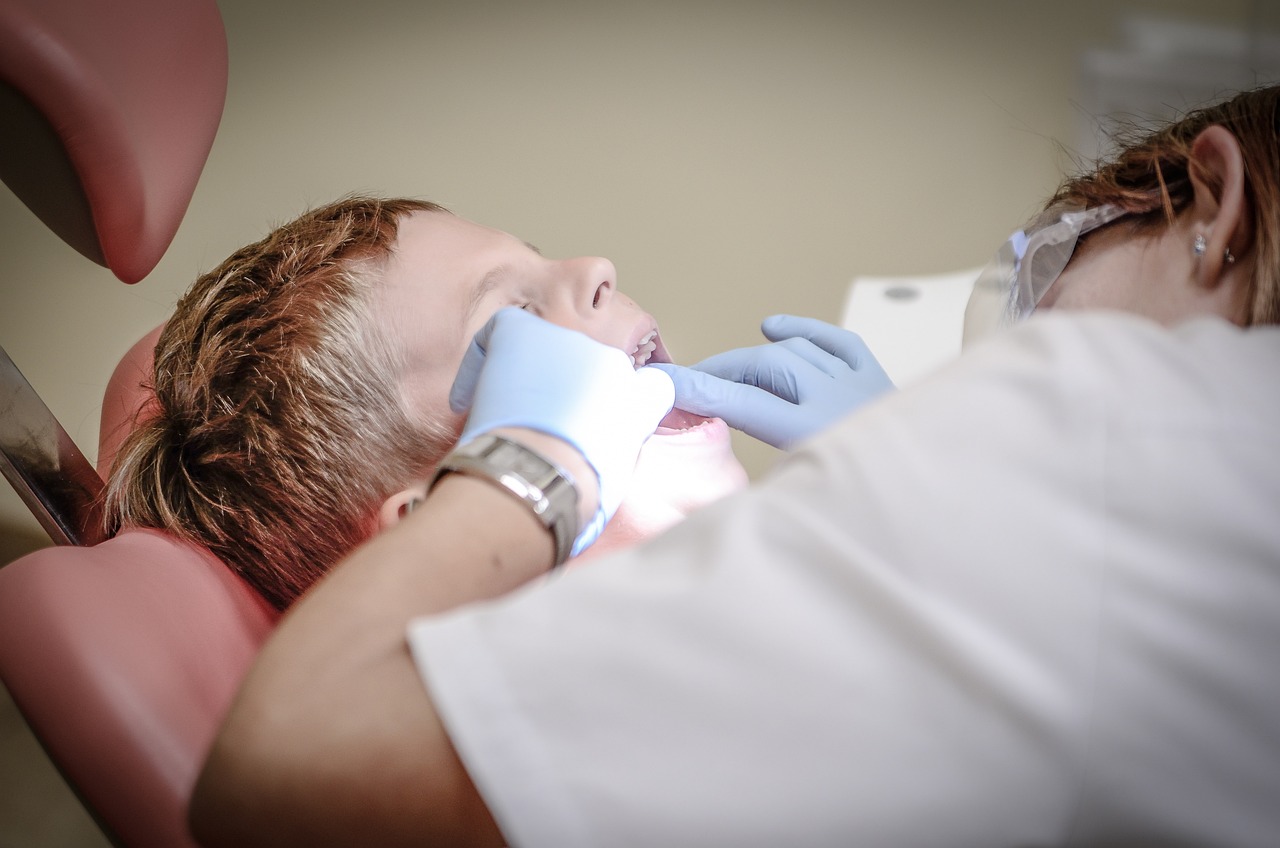
Nutrition for Senior Pets
As our beloved furry friends age, their nutritional needs evolve significantly. Just like us, senior pets require a balanced diet tailored to their changing bodies. This means that what worked for them in their younger years might not be suitable anymore. It's essential to focus on providing them with the right nutrients to maintain their health, energy levels, and overall well-being. So, what should you consider when feeding your senior pet?
First and foremost, protein is a crucial component of their diet. Senior pets need high-quality protein to support their muscles and organs. However, it’s important to choose easily digestible protein sources, such as chicken, fish, or lamb. Additionally, fats are also vital, but moderation is key. Healthy fats can provide energy and help with coat health, but too much can lead to obesity, which is a common issue in older pets.
When it comes to carbohydrates, opting for complex carbs like sweet potatoes or brown rice can provide your senior pet with the energy they need without the risk of weight gain. Moreover, incorporating fiber into their diet can aid in digestion, helping to prevent constipation, which can be a problem as pets age. That’s why many pet owners find it beneficial to look for specially formulated senior pet foods that include these essential nutrients.
It’s also crucial to consider any specific health issues your senior pet might have. For example, if your pet suffers from kidney problems, a diet lower in protein and phosphorus may be necessary. Conversely, pets with arthritis might benefit from anti-inflammatory ingredients like omega-3 fatty acids. This is where consulting your veterinarian becomes invaluable. They can provide tailored advice based on your pet's health and dietary needs.
When selecting food for your senior pet, it’s essential to look for products labeled specifically for senior animals. These foods are formulated to meet the unique needs of older pets. You might find yourself asking, "What should I look for in the ingredient list?" Here are some key factors:
- High-quality protein sources as the first ingredient.
- Added vitamins and minerals to support overall health.
- Low fat content to prevent obesity.
- Digestive health ingredients, such as probiotics and fiber.
Additionally, it’s wise to avoid foods with fillers, artificial preservatives, and by-products. These can be hard for senior pets to digest and may not provide the necessary nutrients they require.
As mentioned earlier, senior pets may have specific health issues that require special dietary adjustments. For instance, pets with diabetes need a diet that helps manage their blood sugar levels. This often means a higher fiber content and controlled carbohydrate intake. On the other hand, pets with heart disease might need a diet low in sodium to help manage their condition. Always keep an open line of communication with your vet regarding any health concerns and dietary changes.
Hydration is another critical aspect of senior pet care. Older pets are often less inclined to drink water, which can lead to dehydration. Dehydration can exacerbate health issues and lead to more severe complications. To encourage your pet to drink more, consider the following tips:
- Provide fresh water daily and ensure their water bowl is easily accessible.
- Consider adding water or low-sodium broth to their food.
- Use a pet water fountain, which many pets find more appealing.
In summary, ensuring your senior pet receives the right nutrition is fundamental to their health and happiness. By selecting high-quality food, considering their specific health needs, and keeping them hydrated, you can help your furry friend enjoy their golden years to the fullest.
Q: How often should I feed my senior pet?
A: Generally, it's best to feed senior pets smaller, more frequent meals rather than one or two large meals to aid digestion.
Q: Can I give my senior pet human food?
A: While some human foods are safe for pets, it's crucial to avoid toxic foods like chocolate, grapes, and onions. Always consult your vet before introducing new foods.
Q: How can I tell if my senior pet is overweight?
A: Check for a visible waist when viewed from above and ensure you can feel their ribs without excess fat covering. Regular vet check-ups can help assess their weight.
Choosing the Right Food
When it comes to selecting the right food for your senior pet, the choices can feel overwhelming. Just like us, our furry companions have unique dietary needs as they age. The key is to find a balance that not only meets their nutritional requirements but also caters to any specific health concerns they might have. So, how do you navigate this food maze? Let’s break it down!
First and foremost, look for age-appropriate food. Senior pet foods are formulated with the right balance of nutrients to support their changing bodies. These formulations typically include lower calories to prevent obesity, higher fiber for digestive health, and increased antioxidants to combat aging. But remember, not all brands are created equal! Always read labels and look for high-quality ingredients.
Here are some important factors to consider when choosing food:
- Protein Content: Senior pets often need more protein than younger pets to maintain muscle mass. Look for foods that list real meat as the first ingredient.
- Healthy Fats: Omega-3 and Omega-6 fatty acids are essential for a shiny coat and healthy skin. They also support joint health, which is crucial for older pets.
- Digestibility: As pets age, their digestive systems may not process food as efficiently. Choosing easily digestible ingredients can help ensure your pet absorbs all the nutrients they need.
In addition to general formulations, consider any special dietary needs. For instance, if your pet has kidney issues, you might need to look for low-protein diets. On the other hand, pets with arthritis may benefit from food enriched with glucosamine and chondroitin. Consulting your veterinarian before making any changes is always a wise move.
Another aspect to keep in mind is the texture of the food. Some senior pets may have dental issues that make it difficult to chew hard kibble. In such cases, wet food or softened kibble can be a better option. You could also mix in some water or broth to make their meals more palatable and easier to consume.
Finally, don’t forget about treats. While it’s tempting to indulge your senior pet with their favorite snacks, moderation is key. Look for treats that are low in calories and high in nutritional value. You can even make your own healthy treats at home to ensure they’re getting the best ingredients possible.
In summary, choosing the right food for your senior pet involves understanding their specific needs, selecting high-quality ingredients, and being mindful of any health issues. With a little research and guidance, you can ensure your furry friend continues to thrive as they age.
Special Dietary Considerations
As our furry friends age, their bodies undergo various changes that may necessitate . It’s not just about feeding them; it’s about understanding their unique health challenges and how to address them through nutrition. For instance, senior pets often experience conditions like arthritis, kidney disease, or dental issues, each requiring tailored dietary adjustments. By being proactive, you can significantly enhance your pet's quality of life.
One of the most common issues is arthritis, which affects mobility and can lead to discomfort. To help manage this, consider foods rich in omega-3 fatty acids, which have anti-inflammatory properties. Look for ingredients like fish oil or flaxseed in your pet’s diet. Additionally, weight management is crucial; excess weight can exacerbate joint pain, so providing a balanced diet with controlled portions is essential.
Another significant concern is kidney health. As pets age, their kidneys may not function as efficiently, leading to a need for dietary adjustments. A diet lower in protein but rich in high-quality protein sources can help reduce the workload on the kidneys. Also, incorporating phosphorus-restricted foods can be beneficial. Always consult your veterinarian to determine the best approach for your senior pet's specific needs.
Dental health is another area that often requires attention. Senior pets are prone to dental diseases, which can lead to pain and difficulty eating. Opting for soft or moistened food can make mealtime easier for them. Additionally, consider dental treats or kibble designed to promote oral health. Regular dental check-ups are also vital, as they can help catch any issues early.
To summarize, here are some key dietary adjustments to consider for senior pets:
- Incorporate omega-3 fatty acids for joint health.
- Consider a lower protein diet for kidney support.
- Choose soft foods to aid dental health.
- Monitor weight to prevent additional strain on joints.
Ultimately, the best approach is to work closely with your veterinarian to create a customized diet plan that addresses your senior pet's specific health concerns. By doing so, you not only ensure that they are receiving the nutrients they need but also show them how much you care about their well-being as they gracefully age.
- What should I feed my senior pet? - A balanced diet tailored to their specific health needs, often lower in calories and protein, is recommended.
- How can I help my pet drink more water? - Encourage hydration by providing fresh water daily, adding water to their food, or using pet water fountains.
- When should I take my senior pet to the vet? - Regular check-ups are essential, but if you notice any changes in behavior, appetite, or mobility, it’s best to consult your vet promptly.
Hydration and Its Importance
When it comes to caring for your senior pet, hydration is often an overlooked aspect that can significantly affect their overall health and well-being. Just like humans, our furry friends need to stay hydrated to maintain their bodily functions, especially as they age. As pets grow older, their bodies may not regulate hydration as efficiently, which can lead to a host of health issues, including kidney problems, urinary tract infections, and even cognitive decline. So, how can we ensure our beloved companions are getting enough water?
Firstly, it's essential to understand that the amount of water a pet needs can vary based on several factors such as their size, diet, and activity level. For instance, a senior dog weighing 50 pounds typically needs about 1 ounce of water per pound of body weight each day, which translates to approximately 50 ounces or 6 cups! However, this can fluctuate depending on the individual pet's health status and environmental conditions.
One effective way to encourage your senior pet to drink more water is by providing fresh, clean water at all times. Cats and dogs can be quite picky about the quality of their water, so ensure their bowl is cleaned regularly to prevent any buildup of bacteria. You might also consider investing in a pet water fountain. Many pets are attracted to running water, and a fountain can stimulate their interest in drinking more frequently.
Another great tip is to incorporate wet food into their diet. Canned food typically contains higher moisture content than dry kibble, which can help boost their overall hydration. Additionally, you can offer ice cubes or frozen treats made from broth or pureed fruits to make hydration a fun and tasty experience for your pet!
Moreover, if you notice your pet is drinking less than usual or showing signs of dehydration, such as dry gums, lethargy, or loss of elasticity in their skin, it’s crucial to consult your veterinarian. They can provide tailored advice and may suggest hydration supplements or special diets designed to enhance fluid intake.
In summary, keeping your senior pet hydrated is a vital part of their care routine. By being proactive and implementing these strategies, you can help ensure your furry friend remains happy, healthy, and hydrated throughout their golden years.
- How can I tell if my pet is dehydrated? Look for signs such as dry gums, lethargy, or skin that doesn't bounce back when gently pulled.
- Is it normal for senior pets to drink less water? It can be common, but it's essential to monitor their intake and consult a vet if you notice significant changes.
- Can I add flavor to my pet's water to encourage drinking? Yes! Adding a small amount of low-sodium broth can entice them to drink more.
Regular Veterinary Check-ups
When it comes to the health of our beloved senior pets, regular veterinary check-ups are nothing short of essential. Just like us, our furry friends experience changes as they age, and these changes can sometimes be subtle yet significant. So, why is it so important to keep those vet appointments? Well, think of it as a health insurance policy for your pet. The earlier you catch any potential issues, the better the chances of successful treatment. Regular visits allow veterinarians to monitor your pet's health, detect any problems early on, and adjust care plans accordingly.
During these check-ups, your vet will conduct a thorough examination, which typically includes:
- Checking weight and body condition
- Assessing dental health
- Listening to heart and lung sounds
- Examining skin and coat condition
- Performing routine blood work
Each of these aspects is crucial because they can reveal underlying health conditions that may not yet be visible. For example, sudden weight loss or gain can indicate metabolic issues, while dental disease can lead to more severe health problems if left untreated. Regular blood tests can help detect kidney or liver issues, diabetes, and even certain cancers before they become life-threatening.
So, how often should you schedule these check-ups? For senior pets, it's generally recommended to visit the vet at least every six months. This frequency allows for closer monitoring of their health and ensures that any changes are promptly addressed. However, if your pet has pre-existing conditions or is on medication, your vet might suggest more frequent visits. Always follow your veterinarian's recommendations, as they know your pet's individual needs best.
In addition to physical examinations, these visits are also a great opportunity to ask questions about your pet's behavior, nutrition, and any concerns you might have. Remember, your vet is there to help you provide the best care possible for your furry family member. Keeping an open line of communication with them can significantly enhance your pet's quality of life.
In conclusion, regular veterinary check-ups are vital for the well-being of senior pets. They help catch potential health issues early, allow for timely interventions, and provide pet owners with the knowledge needed to make informed decisions about their pet's care. So, don’t skip those appointments—your pet’s health depends on it!
- How often should I take my senior pet to the vet? It's recommended to visit the vet at least every six months for senior pets.
- What should I expect during a veterinary check-up? Expect a thorough examination, including weight checks, dental assessments, and possibly blood tests.
- Can I ask my vet questions during the check-up? Absolutely! Your vet is there to help and answer any concerns you may have about your pet's health.

Exercise and Mobility
Maintaining mobility and exercise is not just important; it's essential for the overall well-being of your senior pet. As our furry friends age, their energy levels naturally decrease, and they may not be as eager to run and play like they once were. However, this doesn't mean that exercise should be neglected! Just like us, our pets need to stay active to keep their joints flexible and their minds sharp. Think of exercise as a magic potion that can help enhance their quality of life, keeping them spry and engaged.
When considering exercise for senior pets, it's crucial to tailor activities to their individual needs and capabilities. While younger pets might thrive on vigorous play sessions, senior pets often benefit from low-impact activities that promote movement without causing stress or strain. This could include gentle walks around the neighborhood or even light indoor play. Just imagine your pet enjoying a leisurely stroll, sniffing all the delightful scents in the air—it's not just exercise; it's an adventure!
One of the best ways to ensure your senior pet stays active is by incorporating short, frequent exercise sessions into their daily routine. Rather than a long walk that might tire them out, aim for multiple short walks throughout the day. This method keeps them engaged without overwhelming them. Additionally, consider activities that stimulate their mind, such as puzzle toys or hide-and-seek games. It’s like a workout for both their body and brain!
To help you decide on suitable exercises, here’s a quick reference table outlining various low-impact activities for senior pets:
| Activity | Description | Benefits |
|---|---|---|
| Gentle Walks | Short, leisurely strolls around the neighborhood. | Improves cardiovascular health and joint mobility. |
| Swimming | Low-impact exercise that is easy on the joints. | Builds strength and endurance without strain. |
| Interactive Toys | Puzzle toys that require problem-solving. | Stimulates mental activity and keeps them engaged. |
| Indoor Fetch | Throwing a soft toy a short distance. | Encourages movement in a safe environment. |
Another vital aspect of ensuring your senior pet's mobility is to adapt your home environment. This means creating a space that is safe and accessible. For instance, consider placing non-slip mats on slippery floors to prevent falls and using ramps or steps to help them get on and off furniture easily. It's like giving them their own little playground that caters to their needs!
Moreover, keeping an eye on your pet’s weight is crucial. Obesity can lead to a host of health issues, including joint pain and decreased mobility. Regular exercise combined with a balanced diet will help maintain a healthy weight, ensuring your furry friend can enjoy their golden years to the fullest. Remember, a happy pet is an active pet!
In conclusion, keeping your senior pet active and mobile is not only about physical health—it's about enhancing their overall happiness and quality of life. By incorporating gentle exercises, adapting their environment, and being mindful of their needs, you can create a fulfilling routine that keeps your beloved companion thriving.
- How often should I exercise my senior pet? Aim for short sessions of 10-15 minutes, multiple times a day, based on your pet's energy levels and physical condition.
- What signs should I watch for during exercise? Look for signs of fatigue, discomfort, or reluctance to continue. If your pet seems tired, it’s time to stop.
- Can senior pets swim? Yes, swimming can be a fantastic low-impact exercise for senior pets, but always supervise them closely.
- How can I encourage my senior pet to stay active? Incorporate fun activities, use engaging toys, and make exercise a part of your daily routine.
Low-Impact Activities
When it comes to keeping our senior pets active, are the name of the game. Think of these activities as the gentle yoga of the pet world—perfect for maintaining health without the risk of injury. Just like us, our furry companions need to stay active as they age, but their bodies require a little more care and consideration. So, what are some fun and safe ways to keep your older pet moving?
First off, let’s talk about short walks. While your younger pets may thrive on long, adventurous hikes, senior pets often benefit from shorter, more frequent strolls. Aim for a leisurely pace, allowing them to sniff and explore their surroundings. Not only does this provide physical exercise, but it also stimulates their senses and keeps their minds sharp. A good rule of thumb is to keep walks to about 10-15 minutes, adjusting based on your pet’s energy levels and mobility.
Another fantastic option is gentle playtime with soft toys. This can be as simple as a game of fetch with a plush toy or a light tug-of-war using a rope. The key is to keep it low-key—avoid high-energy games that could lead to strain or injury. It’s all about finding that sweet spot where your pet can enjoy themselves without overexerting.
Swimming is another excellent low-impact activity for senior pets. If you have access to a dog-friendly pool or a calm lake, consider introducing your pet to the water. Swimming provides a full-body workout without the harsh impact on their joints. Just make sure to supervise them closely and use a life jacket if they are not strong swimmers. It’s a great way for them to build muscle while keeping cool!
Additionally, interactive toys can be a wonderful way to engage your senior pet mentally and physically. Toys that dispense treats or require them to solve a small puzzle can keep their minds active while encouraging them to move around. This is especially beneficial for pets who may not be as mobile as they once were, as it stimulates their brain without requiring too much physical exertion.
Lastly, don’t underestimate the power of gentle stretching. Just like humans, pets can benefit from a little flexibility training. You can gently stretch their legs and back to help maintain mobility and prevent stiffness. Always be gentle and watch for any signs of discomfort. This can be a lovely bonding experience that helps you both relax.
In summary, keeping your senior pet active doesn’t have to be a rigorous endeavor. By incorporating low-impact activities into their daily routine, you can help maintain their physical health while also enhancing their quality of life. Remember, the goal is to keep them moving and engaged, so find what works best for your furry friend and enjoy those moments together!
- How often should I exercise my senior pet? Aim for short, daily sessions of 10-15 minutes, adjusting based on their comfort and energy levels.
- What are some signs that my senior pet is overexerting themselves? Look for heavy panting, limping, or reluctance to continue. If you notice these signs, it’s time to take a break.
- Can all senior pets swim? Not all pets are natural swimmers. Always supervise and consider a life jacket for added safety.
- Are there specific toys recommended for senior pets? Yes! Look for soft, easy-to-handle toys that won’t strain their teeth or joints.
Adapting the Home Environment
Creating a safe and comfortable home for your senior pet is not just a luxury; it’s a necessity. As our furry friends age, they face various challenges that can affect their mobility, vision, and overall comfort. Therefore, adapting their living environment can significantly enhance their quality of life. Think of it as creating a cozy haven for your beloved companion, where every corner is tailored to their needs.
First and foremost, consider the layout of your home. Is your pet able to navigate easily? Removing clutter and obstacles can make a world of difference. For instance, if you have stairs, think about installing a ramp or using baby gates to prevent falls. It’s like creating a pet-friendly highway, where your senior pet can cruise around without any bumps or hurdles.
Another critical aspect is the flooring. Many senior pets suffer from joint pain or arthritis, making slippery surfaces a hazard. If you have hardwood or tile floors, consider adding non-slip rugs or mats. This simple change can prevent slips and provide a more stable footing for your furry friend. Imagine how much more comfortable your pet will feel walking on a plush surface compared to a slick floor!
Lighting is also essential. Senior pets may have diminished eyesight, so ensuring that your home is well-lit can help them navigate spaces more confidently. Think about adding night lights in areas they frequent, like the hallway or near their sleeping area. It’s like giving them a guiding star to follow in the dark!
Additionally, creating a designated resting area can provide your senior pet with a sense of security and comfort. Choose a quiet spot away from the hustle and bustle of daily life, and furnish it with a soft, supportive bed. You might even consider using a heated pet bed to soothe aching joints, especially during colder months. This little sanctuary can be their go-to place for relaxation and peace, just like a personal retreat.
Lastly, pay attention to the temperature of your home. Senior pets can be more sensitive to extreme temperatures, so keeping your home at a comfortable level is crucial. If your pet enjoys lounging in the sun, ensure they have access to a shaded area to prevent overheating. Conversely, during the winter, provide cozy blankets or jackets to keep them warm. It’s all about creating a balanced environment that caters to their comfort.
In summary, adapting your home for a senior pet involves thoughtful adjustments that prioritize their safety and comfort. By making these changes, you’re not just enhancing their living space; you’re enriching their lives. After all, our pets deserve a home that caters to their golden years, filled with love and care!
- What are some common signs that my pet needs a home environment adaptation? Look for signs like difficulty walking, hesitation on stairs, or reluctance to jump onto furniture.
- How can I help my senior pet feel more comfortable at home? Consider providing supportive bedding, ensuring easy access to food and water, and keeping their living area clutter-free.
- Are there specific products designed for senior pets? Yes, there are many products available, such as orthopedic beds, ramps, and non-slip mats that cater specifically to the needs of senior pets.
Frequently Asked Questions
- What are the signs that my pet is becoming a senior?
As pets age, you might notice some changes in their behavior and physical condition. Common signs include decreased energy levels, changes in appetite, difficulty in mobility, and increased sleeping. You may also see changes in their coat, such as graying fur or increased shedding. If you notice any of these signs, it's time to adapt their care routine.
- How can I improve my senior pet's diet?
Improving your senior pet's diet starts with choosing high-quality, age-appropriate food. Look for options that are formulated specifically for senior pets, as these often have the right balance of nutrients. Additionally, consider incorporating supplements like omega fatty acids for joint health and antioxidants for immune support. Always consult your vet before making significant dietary changes.
- How often should I take my senior pet to the vet?
For senior pets, regular veterinary check-ups are crucial. It's recommended to visit the vet at least every six months. These visits allow for early detection of potential health issues and help you stay on top of vaccinations and dental care. Remember, a little prevention goes a long way in keeping your furry friend healthy!
- What type of exercise is suitable for senior pets?
Senior pets benefit from low-impact exercises that keep them active without straining their joints. Activities like gentle walks, swimming, or interactive play sessions with soft toys can be great options. Always pay attention to your pet's limits and adjust the duration and intensity of exercise as needed.
- How can I make my home more comfortable for my senior pet?
Creating a comfortable home for your senior pet involves making a few adjustments. Ensure they have a cozy, easily accessible bed in a quiet area. You might also want to use non-slip mats to help them navigate slippery floors, and consider raising food and water bowls to reduce strain on their necks. Small changes can make a big difference in their comfort!
- What should I do if my senior pet refuses to eat?
If your senior pet is refusing to eat, it could be a sign of an underlying health issue. Start by checking for any dental problems or changes in their food that they may not like. You can also try warming their food to enhance the aroma or offering wet food instead of dry. If the issue persists, consult your veterinarian for further guidance.


